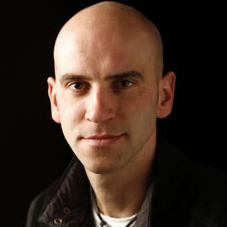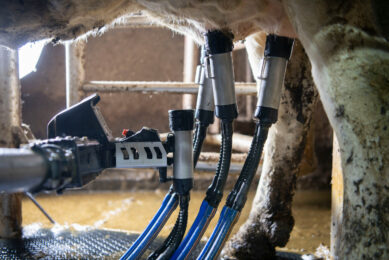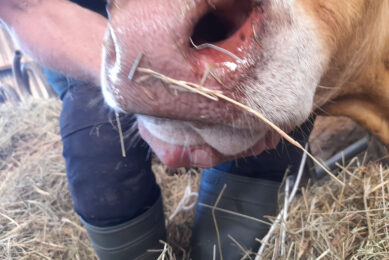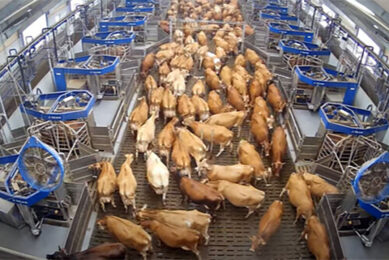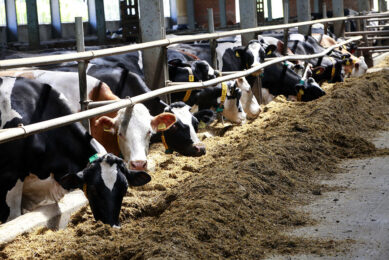Milkinig robots are becoming smarter and cheaper
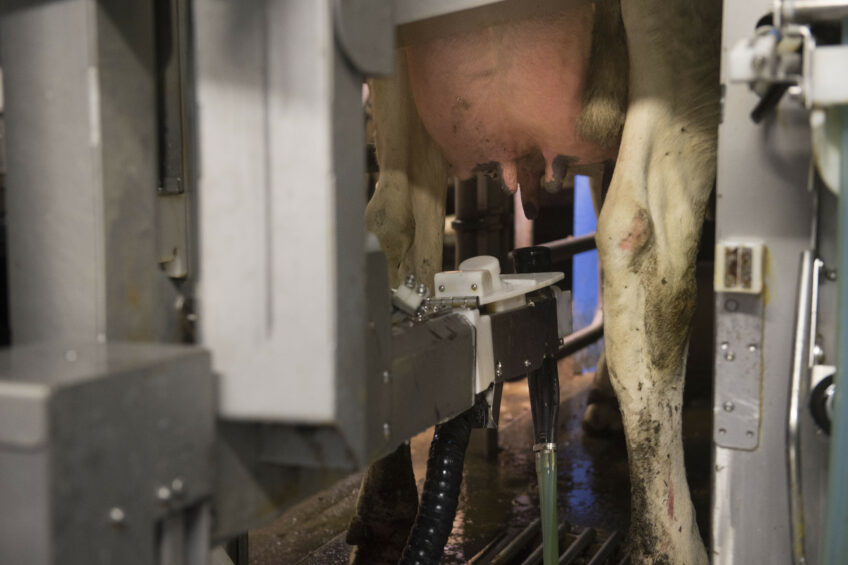
The market for milking robots is strained, which makes negotiating easier. The developments tend to move towards data analysis and faster sensor technique. The robot may also play a role in the diversity of the milk flow. We took a look at the current milking robot situation in the Netherlands.
Especially in family businesses, the milking robot remains a consideration. 225 milking robots were sold in 2017, which makes up nearly half of the 535 milking systems. According to the Dutch KOM Foundation (for maintenance and service), there are 3,959 automated milking systems in the Netherlands, of the total of 17,667 milking installations. This means that over 22% of Dutch farmers have a robot, which is more than the percentage of farmers that own side-by-side milking parlours.
Players in the market
It seems that 3 players divide 80% of the market. Lely and Delaval take the lead, followed by GEA. Fullwood, SAC and BouMatic divide the rest of the market.

Lely is profiting from its early start in 1992. Delaval and GEA use the existing network in the milking parlours, just like Fullwood and SAC, who are by now balanced down to the last detail. BouMatic benefits from its unique connector through the cow’s hind legs, and it has more experience than you might think; in the past, it sold the Fullwood/Lely concept in the United States. The company has also been selling the Hokofarm robot of Marknesse-based SAC as Proflex for 2 years. For the past 3 years, the company has boasted its own MR-S1 robot, developed in the Netherlands. The Hokofarm robot can also be purchased in Germany through the Happel firm and in the United States as the AMS Galaxy USA and the Astrea version is for sale in some other countries. The SAC Futureline by now has its fourth generation, the Elite. The other brands have also seen a number of generations.
Prices under heavy pressure
Today, robot manufacturers are feeling the price developments in the dairy market more than ever before. The competition is harsh and several brands divide the cake. This means that farmers have a good position. There is more to choose from and little demand, so manufacturers can do little else than adapt to the market. Many new parlours were built in 2015 and 2016, which saw sales of milking robots soar. Now, they are mostly installed in existing parlours and the market is finding itself under increasing pressure. Before, the advisory price for a milking robot exceeded € 100,000, € 90.000 after discounts. Now, prices of € 80,000 or less are no exception, even if you only buy 1 box. When you buy several at a time, more is possible. Scrapers, drinking machines for calves, feed concentrate boxes and feed shovers are mostly sold in the same deal. Manufacturers testify to this. André de Leeuw from Delaval explains: “Prices definitely remain under pressure. Roughly one third of robots are sold as an expansion, in addition to the existing robots. Two thirds are for farmers who switch from a conventional milking pit to a robot.”
Second hand also renews
De Leeuw estimates that 10% of farmers choose a second hand robot. Prices are under pressure in this segment as well. A well-maintained, 8 year old robot can be reinstalled and be sold for about € 35,000. The manufacturer knows the maintenance history and the number of milkings. Johan Knol from GEA says: “Many older farmers quit and they were the ones that milked with a robot in their last years as farmers. Of course, the prices may differ from € 10,000 to € 20,000, depending on the level of maintenance and the robot’s version.

The days of many second hand robots coming from Denmark are behind us. The Danes have recovered from their crisis. Exchanged robots often vanish into international trade, in which traders buy the common versions and offer them again on websites such as Agriaffairs and Traktorpool. At the same time, the second hand market is renewing. Lely for example will cease keeping parts of its current Astronaut A2 robots in stock by 2021. Robots manufactured by late starters are already too old to update.
Hardly any operational lease
About 30% to 40% of applications for new robots concerns leasing. Bart Gieling from SAC explains: “Applying for bank financing remains difficult, but because a leasing company does accept the robot separately as a pledge, SAC can offer good interest rates in cooperation with BNP Paribas.” In addition to BNP, leasing company Lage Landen is also frequently mentioned. They like to lease robots, because they can be installed ‘plug and play’ and if necessary, can easily be removed again. At this moment, only 10% of robots are actually leased. “Buying is not that hard,” says Knol. “The important thing is that farmers remain able to pay for the robot’s maintenance.” Almost all manufacturers offer only a financial lease, effectively placing the robot on the farmer’s balance. Only Lely offers an operational lease for a specific amount per litre of milk. Knol adds,“We are a listed company. We want as little assets as possible on our balance, which makes operational lease unsuitable for us. We do however offer a very complete maintenance package, which effectively offers the same results in combination with a financial lease.” Other manufacturers also have this possibility.

Robot for different milk flows
The largest development can still be found in refining sensors, data analysis and software. Especially the larger brands have very adequate hardware. Connecting, milking, rapid maintenance and simple operation remain challenges. More is possible every 15 minutes, such as separating and measuring temperature, colour, conductivity and quality. Delaval uses an extensive advisory body to reach more milk per cow. They have also been approved by the NZO for pasturing registration, just like Lely and GEA. Lely sees a future for robots as far as adding value to different milk flows is concerned. “Supplying the global market with bulk products is too competitive because of low-wage countries and large-scale agriculture elsewhere,” says Lely’s Timo Joosten. “I see a trend towards diversification, added value and as a result, different milk flows. The robot can play a large part in this, because it can separate milk. The challenge is to have sensors analyse the milk even faster and select and separate it based on protein levels, omega acids, milk for formula or another specific combination. A milk robot can create different milk flows within one mixed herd.”
40 active carousel robotsThe carousel robot is becoming a fixed value. Large companies can milk 300 to 2,500 cows automatically. A carousel system is a common concept and can easily be installed in existing structures, feeding methods, management, staff and pasturing. Demand also exists: Delaval has already installed some 20 AMR’s. The robot carousel with 24 positions starts at € 750,000 and milks around 90 cows an hour. GEA has also installed around 20 robot carousels. They can vary in size. The smallest DairyProQ is installed in Germany and has 28 positions. The largest has 80 positions and is installed in the United States. Because every position has its own arm, the capacity is higher with 140 to 170 cows an hour on a platform with 28 positions. A robot with 80 positions milks around 400 to 500 cows an hour. At GEA, the costs per position are € 50,000 to € 60,000. Lely deliberately does not supply robot carousels. “When the rotor breaks, everything stops. You can spread this risk if you have several single boxes,” Joosten explains. “Moreover, a transport network to pump feed and milk over longer distances is easy to organise.” The others are still thinking of a carousel or working on it. Otto van Pol from BouMatic says, “Our robot arm is obviously easy to copy to our external milking systems. Part of our robot’s software development has already moved from Emmeloord to our Texan R&D department in Houston. We develop most of our products there.” |


